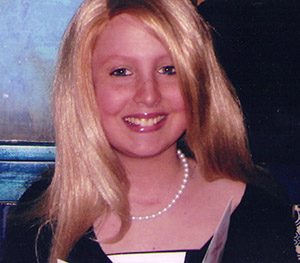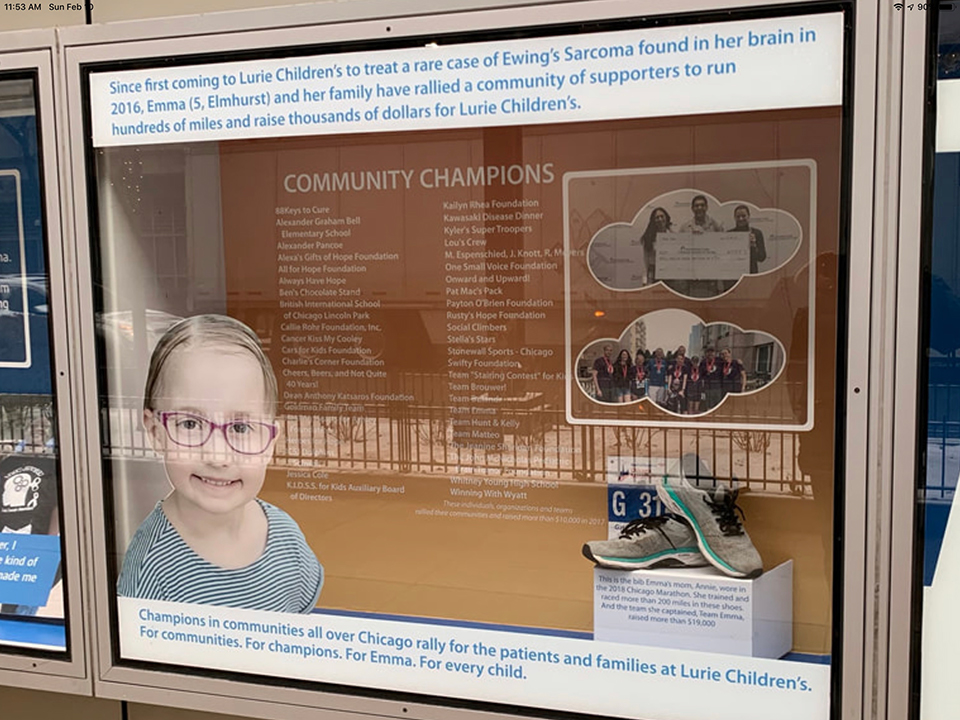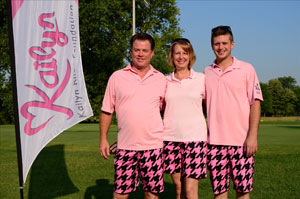
 Kailyn Christine Rhea's strength, determination and generosity while battling cancer was a source of inspiration for family and friends.
Kailyn Christine Rhea's strength, determination and generosity while battling cancer was a source of inspiration for family and friends.
In July 2004, Kailyn was diagnosed with alveolar rhabdomyosarcoma, a rare cancer of muscles in children. Shortly after she was diagnosed, the 11 year old started collecting hats for cancer patients who had lost their hair during chemotherapy.
In the same year, Kailyn decided to start the Kailyn Rhea Foundation to raise money for pediatric cancer research and to help other children with the disease. Karen Rhea said her daughter wrote an essay in which she said if she hadn't had cancer, she would not have been able to help other children.
Kailyn passed Thursday July 12, 2007 in her Arlington Heights home. She had just finalized plans for a second annual golf outing she and her family host to raise money for pediatric cancer research.
Amazon will donate 0.5% of the price of your eligible AmazonSmile purchases to Kailyn Rhea Foundation whenever you shop on AmazonSmile. Click above to sign in.

The Rhea family thanks everyone that supports, donates, participates, and works the events.

Please visit the website often for updates on coming events with the Kailyn Rhea Foundation.

Read about the PEOPLE AGAINST CHILDHOOD CANCER (PAC2) and visit the many links on that page for more information about who's helping and what you can do to fight childhood cancer.
About...
Rhabdomyosarcoma
Rhabdomyosarcoma is a type of cancer, specifically a sarcoma (cancer of connective tissues), in which the cancer cells are thought to arise from skeletal muscle progenitors. It can also be found attached to muscle tissue, wrapped around intestines, or in any anatomic location. Most occur in areas naturally lacking in skeletal muscle, such as the head, neck, and genitourinary tract.
Its two most common forms are embryonal rhabdomyosarcoma and alveolar rhabdomyosarcoma. In the former, which is more common in younger children, the cancer cells resemble those of a typical 6-to-8-week embryo. In the latter, which is more common in older children and teenagers, they resemble those of a typical 10-to-12-week embryo.
Rhabdomyosarcoma is a relatively rare form of cancer.
It is most common in children ages one to five, and is also found in teens aged 15 to 19, although this is more rare. This cancer is also an adult cancer but it is rare.
St. Jude Children's Research Hospital reports that rhabdomyosarcoma is the most common soft tissue sarcoma in children. Soft tissue sarcomas make up about 3% of childhood cancers.
The diagnosis of rhabdomyosarcoma is made by a pathologist, he or she will examine a biopsy of the tumor under the microscope and arrive at the diagnosis of rhabdomyosarcoma based on the morphology (appearance) of the tumor cells and the results of immunohistochemical stains.
Diagnosis of rhabdomyosarcoma depends on recognition of differentiation toward skeletal muscle cells. The proteins myoD1 andmyogenin are transcription factor proteins normally found in developing skeletal muscle cells which disappears after the muscle matures and becomes innervated by a nerve. Thus, myoD1 and myogenin are not usually found in normal skeletal muscle and serve as a useful immunohistochemical marker of rhabdomyosarcoma.
Early manifestation can be misdiagnosed as a pseudotumor that is non responsive to steroid treatment.
Treatment for rhabdomyosarcoma consists of chemotherapy, radiation therapy and sometimes surgery. Surgery to remove the tumor may be difficult or impossible depending on the location of the tumor.
If there is no evidence of metastasis, surgery combined with chemotherapy and radiation offers the best prognosis. Patients whose tumors have not metastasized usually have a good chance for long-term survival, depending on the subtype of the tumor.
St Jude's Children's Research Hospital reports that more than 70% of children diagnosed with localized rhabdomyosarcoma have long-term survival.
